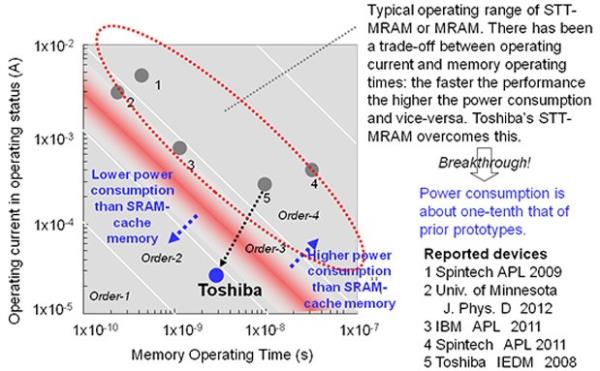It was only last month that we informed HEXUS readers that company, Everspin Technologies, had just launched the first-ever commercial 8MB ST-MRAM chip, albeit at a rather hefty cost. This move has helped the technology gain recognition and kicked-off the journey to mass-production and lower costs.
However, MRAM does have a a few roadblocks in its way to becoming the next SRAM. For one, it's difficult to produce cells bellow 180nm, the structure of components and high-current requirements make it unviable, limiting the maximum achievable capacity. Current leakage, even at 180nm, raises the active power consumption and prevents 100% non-volatile storage. Large components that take more current are also slower, providing a speed hurdle.

It's these roadblocks that Japanese firm, Toshiba, claims to have decimated with its new STT-MRAM technology. The firm's new approach to MRAM involves aligning the spin of the electrons supplied to change the direction of a cell's magnetic field.
Normal electric current contains electrons with random, though roughly balanced spin directions; when the aim is to change the direction of a magnetic field, normal electrical current doesn't do this very well, requiring high currents. By aligning the direction of electron spins before-hand, there's a much greater energy transfer to the magnetic field as the forces in the current are not cancelling each-other out.
This makes switching possible at up to 50 times lower power consumption. This will allow smaller components and tracks, opening up the doors for manufacturing processes below even 65nm for greater capacities. Smaller components retain less charge during high-speed switching and so greater speeds can be attained. An added benefit is the removal of current leakage, providing a true zero-current when off. With these new qualities, MRAM has the potential to completely replace SRAM in the future, as a lower-power alternative, with non-volatile properties.













